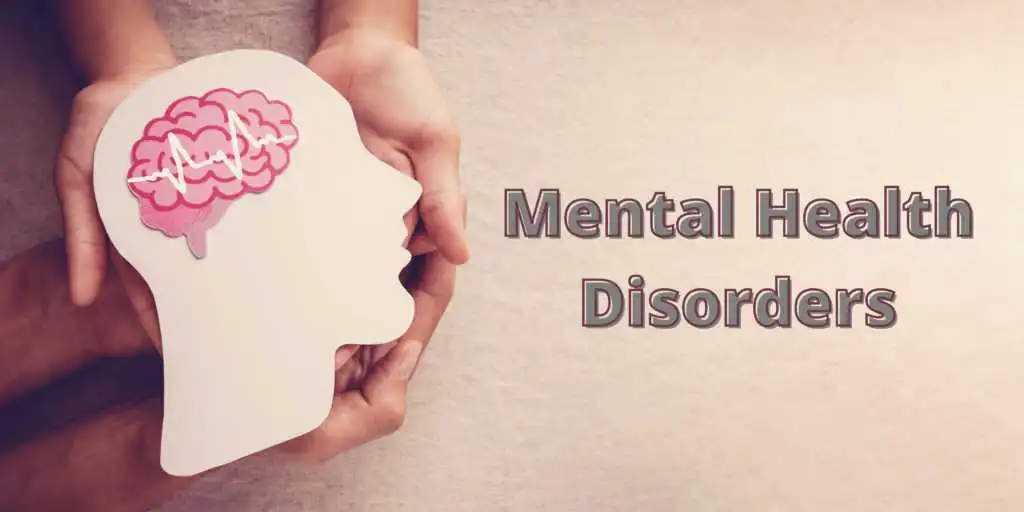Mental health disorders can affect individuals of all sexes, ages, genders, races, and socioeconomic backgrounds. Various factors can act as triggers, and the severity of these illnesses can vary widely. Typically, individuals with mental disorders encounter challenges in managing daily life due to alterations in their thinking, moods, or behaviors.
According to the Centers for Disease Control and Prevention, over half of the population will receive a mental illness diagnosis at some point in their lives. While there is a wide range of mental disorders, this article delves into ten of the most prevalent mental illnesses among adults in the United States.
10 Types of Mental Health Disorders
1. Anxiety Disorders
Anxiety is a common human experience, but when it becomes a constant presence in daily life, it may indicate an anxiety disorder. In the United States, anxiety disorders, encompassing conditions like OCD, panic attacks, and phobias, are the most prevalent mental health disorders. It’s estimated that over 40 million adults are affected by anxiety disorders.
2. Bipolar Disorder
Bipolar disorder is characterized by dramatic shifts in mood, energy levels, and cognitive function. This condition involves extreme highs, known as mania, and lows, referred to as depression. Individuals can experience extended periods without symptoms between episodes. Left untreated, bipolar disorder often progresses. However, with the right treatment plan, which includes psychotherapy, medications, a healthy lifestyle, and early symptom recognition, many individuals with bipolar disorder can lead fulfilling and healthy lives.
3. Depression
Depression, or depressive disorder, extends beyond mere sadness or temporary difficulties. It profoundly impacts an individual’s mood, cognitive processes, and behavior, necessitating both comprehension and professional intervention. Untreated depression can yield devastating consequences, not only for the afflicted but also for their loved ones. Fortunately, early detection, diagnosis, therapy, and a comprehensive treatment strategy, which encompasses medication, psychotherapy, and healthy lifestyle choices, can lead to significant improvement for many individuals.
4. Dissociative Disorders
Dissociative disorders, also referred to as dissociative episodes, involve involuntary departures from reality. This can manifest as disconnections in thoughts, identity, consciousness, and memory. Dissociative disorders can affect individuals of all ages and backgrounds. Research indicates that roughly 75% of Americans experience one or more episodes of depersonalization/derealization at some stage in their lives, with around 2% experiencing chronic episodes.
5. Attention Deficit Hyperactivity Disorder (ADHD)
ADHD is characterized by hyperactivity, inattention, and impulsivity, making it particularly evident in individuals who have this condition. While it’s most commonly diagnosed during adolescence, ADHD can affect people of all ages. According to estimates, 8.8% of children aged 4 to 17 are diagnosed with ADHD. However, it’s worth noting that ADHD is not exclusive to children; around 4.4% of adults aged 18-44 are also known to experience this disorder.
6. Post-Traumatic Stress Disorder
Traumatic events like accidents, assaults, combat, or natural disasters can significantly impact an individual’s mental health. While many may experience intense short-term reactions during life-threatening incidents, some develop prolonged symptoms, potentially leading to PTSD. Often, there is a connection between PTSD symptoms and other conditions, such as substance abuse, anxiety, and depression. Individualized treatment plans are best determined through a comprehensive medical evaluation.
7. Schizophrenia
Schizophrenia profoundly affects an individual’s ability to think clearly, manage emotions, make decisions, and establish connections with others. It is a complex, lifelong condition with multifaceted challenges. While the exact prevalence of schizophrenia in the United States is challenging to pinpoint, estimates range from 0.25% to 0.64% among American adults. Schizophrenia can manifest at any age, with the average onset occurring in late teens to early 20s for men and late 20s to early 30s for women. It is relatively rare in children and individuals both younger than 12 and older than 40. With proper diagnosis and treatment, it is possible to manage schizophrenia and lead a fulfilling life.
8. Obsessive-Compulsive Disorder
Symptoms of OCD encompass repetitive, unwanted, intrusive thoughts known as obsessions, and irrational, excessive urges to engage in specific behaviors referred to as compulsions. Individuals with OCD frequently find themselves unable to control these thoughts and actions, even when they recognize their irrationality. The onset of symptoms typically occurs during childhood, adolescence, or early adulthood, with males often exhibiting signs at a younger age than females.
9. Eating Disorders
Excessive preoccupation with food and weight, to the point where it disrupts other aspects of life, may indicate the presence of an eating disorder. Left unaddressed, eating disorders can dominate an individual’s existence and lead to severe, potentially life-threatening medical issues. Although women are more commonly affected, eating disorders can impact individuals of any age or gender. Symptoms often emerge during adolescence and early adulthood.
10. Addiction & Substance Abuse
The Diagnostic and Statistical Manual, 5th edition (DSM-5) classifies addiction to prescription drugs and alcohol as mental health disorders. There are severe, sometimes life-threatening, side effects associated with different drugs. Almost all addicts and substance abusers struggle with co-occurring disorders. Mose of those co-occurring disorders means they also suffer from depression, anxiety, bipolar disorder, or other untreated illnesses in addition.




